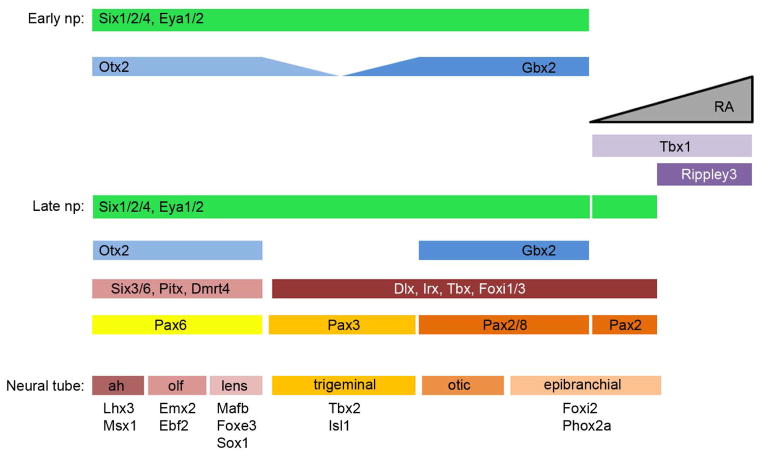Figure 4.
A summary of the anterior-posterior (A-P) patterning of the PPE into anterior, intermediate and posterior domains. Anterior is to the left and posterior is to the right. At early neural plate (np) stages the anterior-specific expression of Otx2 and posterior-specific expression of Gbx2, and their mutual repression in the intermediate zone set the stage for A-P patterning of the PPE, which uniformly expresses Six and Eya genes. Subsequently, RA signaling that locally up-regulates Tbx1 and Ripply3 likely causes new Six/Eya expression in a more posterior domain that will give rise to the most posterior epibranchial (eb) placodes. At late neural plate stages, other transcription factors become restricted to either the anterior domain or the intermediate/posterior domains. Presumably these transcriptional combinations, together with further local signaling, results in region-specific Pax gene expression, leading to the specification of distinct placode fates. Subsequently each of these placodes (ah, adenohypophyseal; olf, olfactory; lens; V, trigeminal; otic; eb, epibranchial) expresses unique combinations of additional genes.

